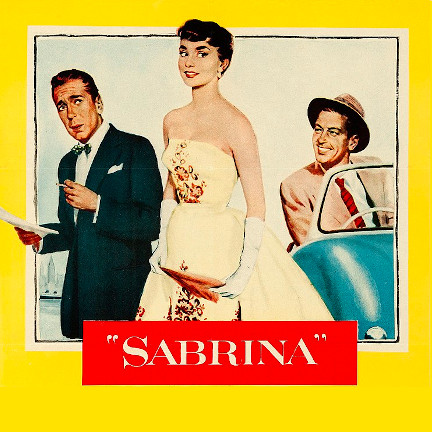Sabrina (Show) AKA Sabrina Fair/La Vie en Rose

Sabrina
1954 AD
AKA Sabrina Fair/La Vie en Rose
American romantic comedy-drama film directed by Billy Wilder, adapted for the screen by Wilder, Samuel A. Taylor and Ernest Lehman from Taylor's 1953 play Sabrina Fair.
The picture stars Humphrey Bogart, Audrey Hepburn and William Holden.
In 2002, the film was selected for preservation in the United States National Film Registry by the Library of Congress as being "culturally, historically, or aesthetically significant".
During production of the film, Hepburn and Holden entered into a brief but passionate and much-publicized love affair. Bogart had originally wanted his wife Lauren Bacall to be cast as Sabrina. He complained that Hepburn required too many takes to get her dialogue right and pointed out her inexperience.
Bogart was very unhappy during the filming, convinced that he was totally wrong for this kind of film, mad at not being Wilder's first choice, and not liking Holden or Wilder. But Wilder's offbeat casting produced a performance that critics generally considered successful. Bogart later apologized to Wilder for his behavior on set, citing problems in his personal life.
Wilder began shooting before the script was finished, and Lehman was writing all day to complete it. Eventually he would finish a scene in the morning, deliver it during lunch, and filming of it would begin in the afternoon. Sketches for skirt, blouse, and apron by Edith Head for Audrey Hepburn in Sabrina.
Although Edith Head won an Oscar for Best Costumes, most of Hepburn's outfits are rumored to have been created by Hubert de Givenchy and chosen personally by the star.
In a 1974 interview, Head stated that she was responsible for creating the dresses, with inspiration from some Givenchy designs that Hepburn liked, but that she made important changes, and the dresses were not by Givenchy. After Head's death, Givenchy stated that Sabrina's iconic black cocktail dress was produced at Paramount under Head's supervision but claimed it was his design
The film began a lifelong association between Givenchy and Hepburn. It has been reported that when Hepburn called on Givenchy for the first time in Paris, he assumed that it was Katharine Hepburn in his salon.
The location used to portray the Larrabee family's mansion in Glen Cove, New York was 'Hill Grove', the home of George Lewis in Beverly Hills, California. This mansion was later demolished during the 1960s. The location used to portray the Glen Cove train station was the Glen Cove train station on the Oyster Bay Branch of the Long Island Rail Road. The building at 30 Broad Street in Manhattan's financial district was used as the location for the headquarters of the Larrabee company.








